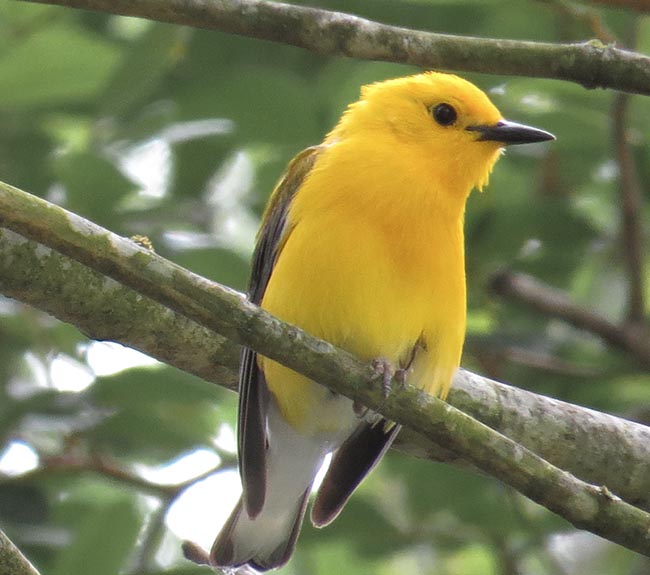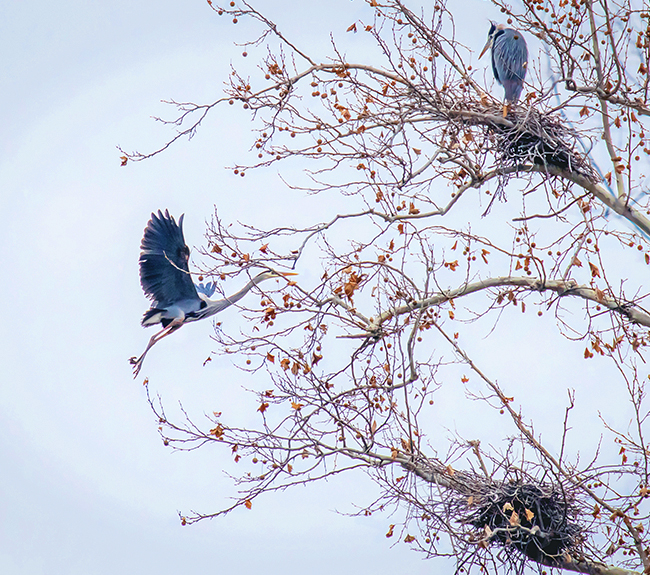Main Menu
Photo Credit: Mike Petrick
Over 220 birds species have been observed at the Heard and 61 species have been documented nesting at Heard Natural Science Museum and Wildlife Sanctuary.
Whether you consider yourself a birder, a birdwatcher or a casual nature observer, the diversity and health of the different habitats at Heard creates the perfect opportunity to observe a number of bird species, both resident and migrant.

Photo Credit: Julie Custer


Photo Credit: Julie Custer
The Heard Natural Science Museum and Wildlife Sanctuary is a 289-acre nature conservancy located in the Blackland Prairie Ecological Region of central Collin County. It contains five different habitats. Along Wilson’s Creek many acres of riparian vegetation ranging from early to late succession make excellent habitat for woodland birds, both migrant and resident. A 50-acre wetlands complex, located in the floodplain, is also found within our borders. It seasonally hosts a large number of migratory waterfowl, shorebirds and a rookery with as many as seven species. As the topography rises through the sanctuary from east to west, the habitat changes into restored tallgrass prairie. The Heard has nearly 60 acres of this endangered habitat. Painted Buntings, Indigo buntings, Dickcissels and Meadowlarks frequently nest in these areas. When the land reaches 75 to 80 feet above the floodplain, Austin Chalk outcroppings of Cretaceous limestone, commonly called escarpments, appear within the sanctuary. These areas can offer great hawk watching posts and spectacular vistas of much of the sanctuary.
The Heard has a long history of bird conservation dating back to its founding in 1967. Bird banding, providing nest boxes, filming nest box activity, Christmas bird counts and habitat improvement have been part of the sanctuary’s mission from its beginning. In August of 2000 the sanctuary was selected as an Important Bird Area (IBA). The IBAs are considered key sites for bird conservation. Several of the birds on the ABC’s green list nest at the Heard (Red-headed Woodpeckers, Painted Buntings, Prothonotary Warblers) and 24 other species have used it as a migration stopover. As we are constantly working to improve our habitats, the Heard will continue to provide an oasis for wild birds in our urban environment.
3rd Thursday Bird Walks
3rd Thursday Bird Walks in the Heard Wildlife Sanctuary are offered by Heard staff. These seasonally relevant bird walks are intended to help beginning and intermediate birders with bird spotting and identification techniques. There are also plenty of opportunities provided for participants to ask questions from experienced birders. This program is offered monthly.
2nd Saturday Bird Walks
Second Saturday Bird Walks in the Heard Wildlife Sanctuary are offered by volunteers from the Prairie & Timbers Audubon Society (PTAS). These bird walks are intended to help beginning and intermediate birders with bird spotting and identification techniques. There are also plenty of opportunities provided for participants to ask questions from experienced birders. Prairie, woodland, and wetland habitats are included in these walks. This program is offered annually from September through June.
These walks are included in General Admission and are free for Heard Museum Members. Join Now
3rd Thursday Bird Walks
Offered Monthly
8 am
2nd Saturday Bird Walks
Offered September through June Annually
8 am
1.5h walk | Optional extended time is available by participant request. Be sure to arrive on time, because if you come a few minutes late, the group may have already started their walk.
Bird banding contributes vital knowledge of habitat use and monitors the flow of migrant songbirds during spring and fall migration each year. More than 25,000 birds have been banded at the Heard since the station’s establishment in 1978 and has provided information to evaluate habitat breeding quality.
The station shares data with the U.S. Fish and Wildlife Service Bird Banding Laboratory (BBL) and participates in The Institute for Bird Populations (IBP) “MAPS” program (Monitoring Avian Productivity and Survivorship) by contributing our data to an international effort. MAPS measures reproduction on breeding grounds and combines data from the U.S., Canada and Mexico so scientists can determine global populations of most songbird species. During this program, mist nets are operated from late May through August to catch and band neotropical species that breed on the sanctuary. Bird banding programs such as these help determine the local population status of target species throughout their continental ranges.
The Heard Birdhouse Network includes trained volunteers who conduct maintenance and monitoring of nesting boxes. Wood Duck, Hooded Merganser, Prothonotary Warbler, Eastern Bluebird, Carolina Wren, Purple Martin, Carolina Chickadee and Tufted Titmouse nest regularly in Heard nest boxes.
Each year, the National Audubon Society sponsors a nation-wide Christmas Bird Count (CBC) on the day after Christmas. The Audubon Society’s local chapter, Prairie & Timbers Audubon Society, organizes the McKinney count, collects the data and sends it to the National organization. Every state is divided into areas and every area is divided into sections. The same sections are counted every year and thus trends in population increases or decreases can be determined.
The event is not only a great excuse for birders to go birding, but an opportunity for less experienced or perhaps new birders to get out in the field with the long-time birders and hone their bird watching skills. The count lasts all day, usually from dawn ‘till dusk with a lunch break at noon, which is often provided. If you were not able to join us this year, please put it on your calendar for next year.
As in other years, the total number of species found at The Heard is only what was observed the day of the count. Species that are frequently on the sanctuary at this time of year include cowbirds, red-winged blackbirds, meadowlarks, common grackles, grasshopper and LeConte’s sparrow, lark, tree, and swamp sparrows, eastern towhee, loggerhead shrike, Bewick’s, house, and sedge wrens, pied-billed grebe, white pelican, hooded merganser, Forester’s tern, wigeon, shoveler, ring-neck duck, coots, yellowlegs, harriers, Cooper’s and sharp-shinned hawks, Swainson’s hawk, kestrel, barred and screech owls, roadrunner, and red-headed woodpecker.
Prairie & Timbers Audubon Society (PTAS) has monthly meetings at the Heard Museum that feature programs with guest speakers on topics of interest to birders. These meetings are open to the public. Organized in 1980, Prairie and Timbers Audubon Society serves Collin County and surrounding counties.
The Heard Nature Photographers Club meetings are open to the public.
Here are a few birds you might see during your visit.
© 2024 Heard Museum Natural Science Museum & Wildlife Sanctuary
1 Nature Pl, McKinney, TX 75069 | Contact | Privacy Policy | Website Design by HMG Creative